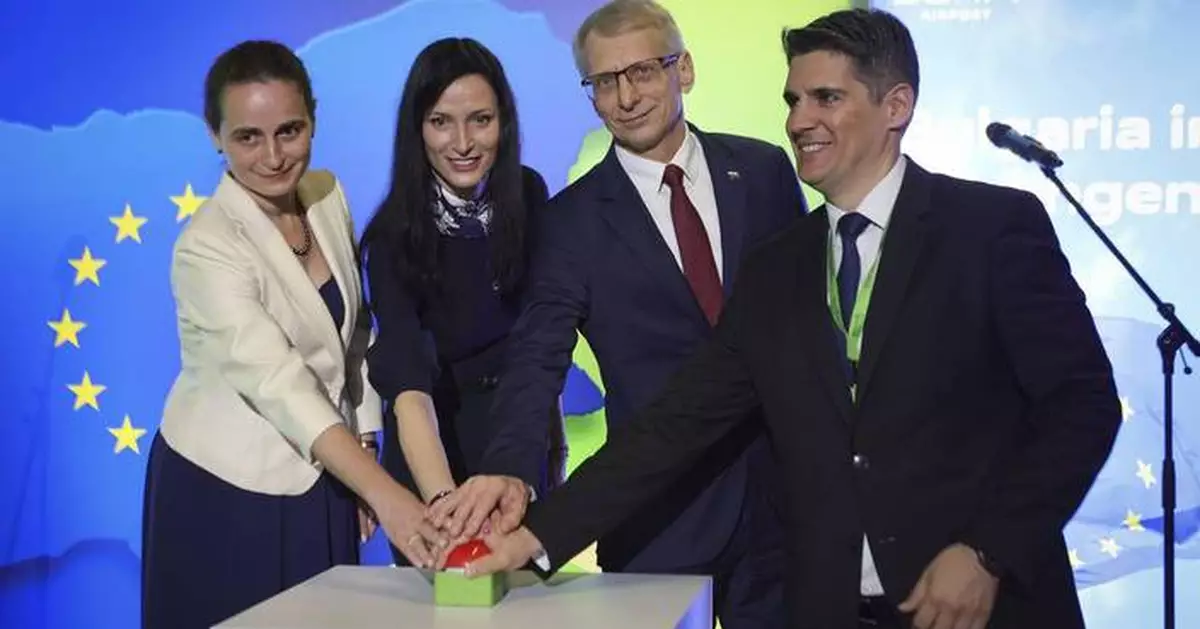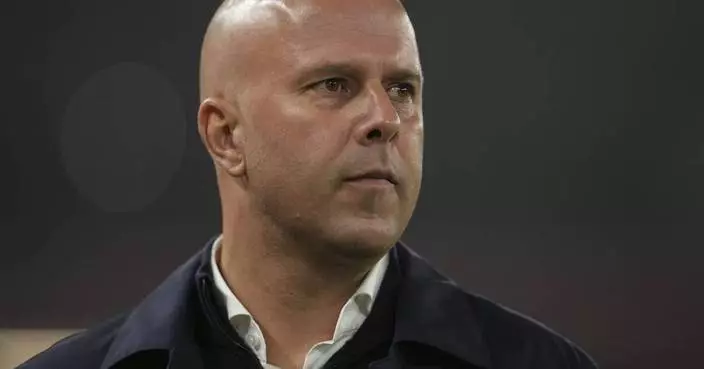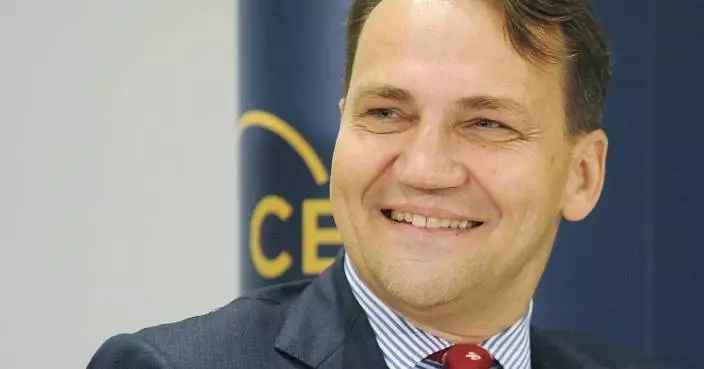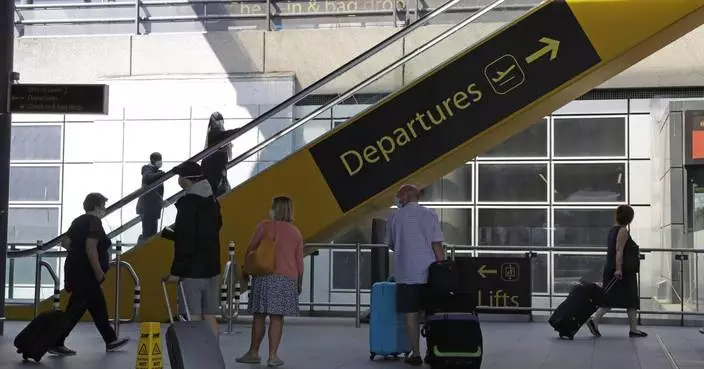BUDAPEST, Hungary (AP) — Bulgaria and Romania could become full members of Europe's Schengen travel zone starting at the beginning of 2025, Hungarian officials said on Friday.
The two Balkan countries joined the European Union in 2007 but were not integrated into the borderless Schengen zone until March, when border checks were lifted from maritime and air travel. Land border checks remained in place due to opposition primarily from Austria, which has long blocked Schengen entry for the two countries over illegal migration concerns.
But following a meeting of the Austrian, Bulgarian, Hungarian and Romanian interior ministers in Budapest on Friday, Austria lifted its opposition, paving the way for a final decision by a summit of EU interior ministers in December.
Hungary's Interior Minister Sándor Pintér said Friday that Romania and Bulgaria, which both have borders with countries outside the EU, are now “one step closer to becoming full Schengen members.” He added that there was a “clear opportunity” to finalize the process by the end of the year, and that the countries would need to jointly send at least 100 border guards to the frontier between Bulgaria and Turkey.
EU Home Affairs Commissioner Ylva Johansson, who was also present at the meeting, said in a video posted on X: “This is a great day to achieve the full freedom for all the citizens of Bulgaria and Romania into the Schengen area, and I'm very happy today.”
The Schengen Area was established in 1985. Before Bulgaria and Romania’s partial admission, it was comprised of 23 of the 27 EU member countries, along with Switzerland, Norway, Iceland and Liechtenstein. Around 3.5 million people cross an internal border each day.
Ursula von der Leyen, the head of the EU's executive commission, wrote on X that the two neighboring countries “belong fully to the Schengen area.”
“I welcome the positive outcome of informal discussions in Budapest today ... Let 2025 see Schengen become stronger,” she said.

FILE - From left: Yordanka Chobanova, the head of the Representation of the European Commission in Bulgaria, Maria Gabriel, deputy Prime Minister, Nikolay Denkov, Prime Minister, Jesus Caballero, Sofia Airport's CEO, press the red button during an official opening of Schengen borders by air, at Sofia airport, Bulgaria, Sunday, March 31, 2024. Hungarian officials say Bulgaria and Romania could become full members of Europe’s Schengen travel zone starting at the beginning of 2025. (AP Photo/Valentina Petrova, File)
BAKU, Azerbaijan (AP) — A new draft of a deal on cash to curb and adapt to climate change released Friday afternoon at the United Nations climate summit pledged $250 billion by 2035 from wealthy countries to poorer ones. The amount pleases the countries who will be paying, but not those on the receiving end.
The amount is more than double the previous goal of $100 billion a year set 15 years ago, but it's less than a quarter of the number requested by developing nations struck hardest by extreme weather. But rich nations say the number is about the limit of what they can do, say it's realistic and a stretch for democracies back home to stomach.
It struck a sour note for developing countries, which see conferences like this one as their biggest hope to pressure rich nations because they can't attend meetings of the world's biggest economies.
"Our expectations were low, but this is a slap in the face,” said Mohamed Adow, from Power Shift Africa. “No developing country will fall for this. They have angered and offended the developing world.”
The proposal came down from the top, the presidency of U.N. climate talks — called COP29 — in Baku, Azerbaijan. Delegations from numerous countries, analysts and advocates were kept in the dark about the draft until it dropped more than a half a day later than promised, prompting grumblings about how this conference was being run.
“These texts form a balanced and streamlined package,” the Presidency said in a statement. “The COP29 Presidency urges parties to study this text intently, to pave the way towards consensus, on the few options remaining.”
This proposal, which is friendly to the viewpoint of Saudi Arabia, is not a take-it-or-leave-it option, but likely only the first of two or even three proposals, said Climate Analytics CEO Bill Hare, a veteran negotiator.
“We’re in for a long night and maybe two nights before we actually reach agreement on this,” Hare said.
Just like last year's initial proposal, which was soundly rejected, this plan is “empty” on what climate analysts call “mitigation” or efforts to reduce emissions from or completely get off coal, oil and natural gas, Hare said.
The frustration and disappointment at the proposed $250 billion figure was palpable on Friday afternoon.
“It is a disgrace that despite full awareness of the devastating climate crises afflicting developing nations and the staggering costs of climate action — amounting to trillions — developed nations have only proposed a meagre $250 billion per year," said Harjeet Singh of the Fossil Fuel Non-Proliferation Treaty.
That amount, which goes through the year 2035, is basically the old $100 billion year goal with 6% annual inflation, said Vaibhav Chaturvedi a climate policy analyst with New Delhi-based Council on Energy, Environment and Water.
Experts put the need at $1.3 trillion for developing countries to cover damages resulting from extreme weather, help those nations adapt to a warming planet and wean themselves from fossil fuels, with more generated by each country internally.
The amount in any deal reached at COP negotiations — often considered a “core” — will then be mobilized or leveraged for greater climate spending. But much of that means loans for countries drowning in debt.
Singh said the proposed sum — which includes loans and lacks a commitment to grant-based finance — adds “insult to injury.”
Iskander Erzini Vernoit, director of Moroccan climate think-tank Imal Initiative for Climate and Development, said “the EU and the U.S. and other developed countries cannot claim to be committed to the Paris Agreement while putting forward such amounts” of money.
Countries reached the Paris Agreement in 2015, pledging to keep warming below 1.5 degrees Celsius (2.7 Fahrenheit) since pre-industrial times. The world is now at 1.3 degrees Celsius (2.3 degrees Fahrenheit), according to the U.N.
Switzerland environment minister Albert Rösti said it was important that the climate finance number is realistic.
“I think a deal with a high number that will never be realistic, that will never be paid… will be much worse than no deal,” he said.
The United States' delegation offered a similar warning.
“It has been a significant lift over the past decade to meet the prior, smaller goal" of $100 billion, said a senior U.S. official. “$250 billion will require even more ambition and extraordinary reach" and will need to be supported by private finance, multilateral development banks — which are large international banks funded by taxpayer dollars — and other sources of finance, the official said.
A lack of a bigger number from European nations and the U.S. means that the “deal is clearly moving toward the direction of China playing a more prominent role in helping other global south countries,” said Li Shou of the Asia Society Policy Institute.
German delegation sources said it will be important to be in touch with China and other industrialized nations as negotiations press on into the evening.
Analysts said the proposed deal is the start of what could likely be more money.
“This can be a good down payment that will allow for good climate action in developing countries,” said Melanie Robinson, global climate program director at the World Resources Institute. “There is scope for this to go above $250 billion if contributors decides to come on board.”
Rob Moore, associate director at E3G, said that whatever figure is agreed “will need to be the start and not the end" of climate cash promises.
"If developed countries can go further they need to say so fast to make sure we get a deal at COP29,” he said.
Associated Press journalists Ahmed Hatem and Aleksandar Furtula contributed to this report.
The Associated Press’ climate and environmental coverage receives financial support from multiple private foundations. AP is solely responsible for all content. Find AP’s standards for working with philanthropies, a list of supporters and funded coverage areas at AP.org.
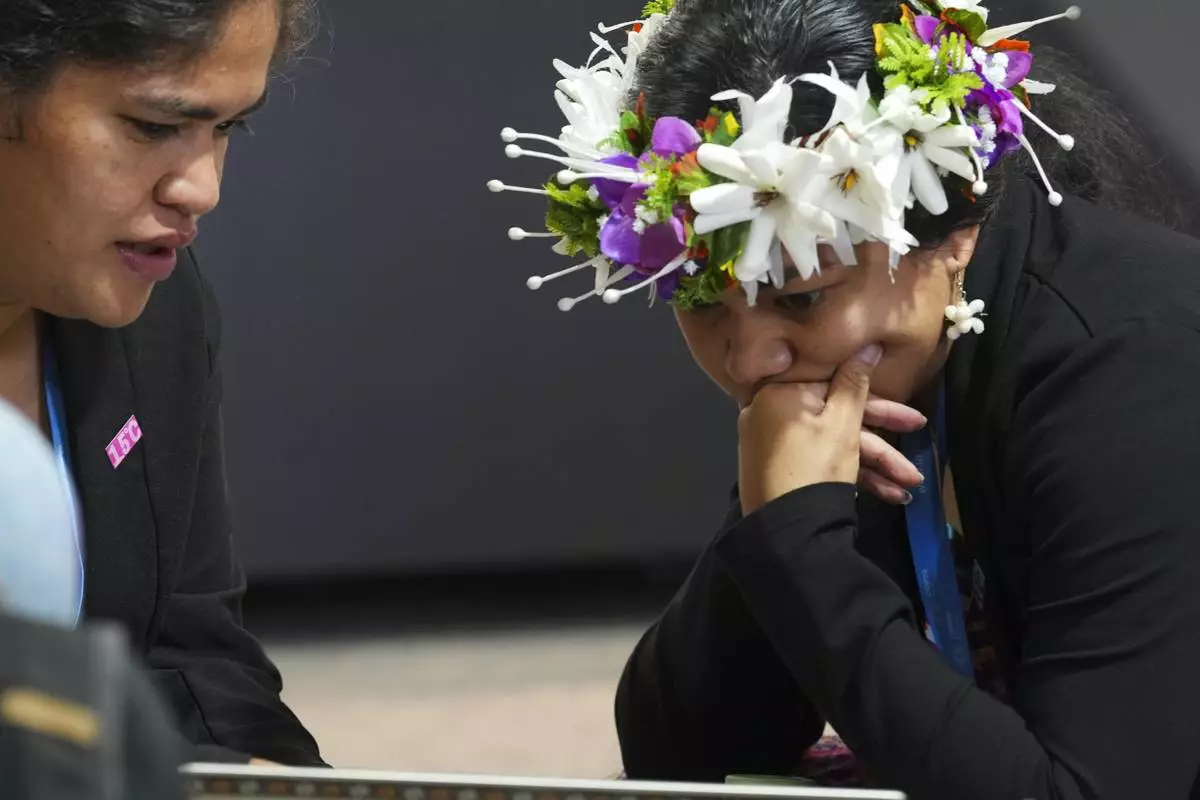
Demi Afasene, of Tuvalu, right, looks through a draft of a proposed deal for curbing climate change at the COP29 U.N. Climate Summit, Friday, Nov. 22, 2024, in Baku, Azerbaijan. (AP Photo/Peter Dejong)
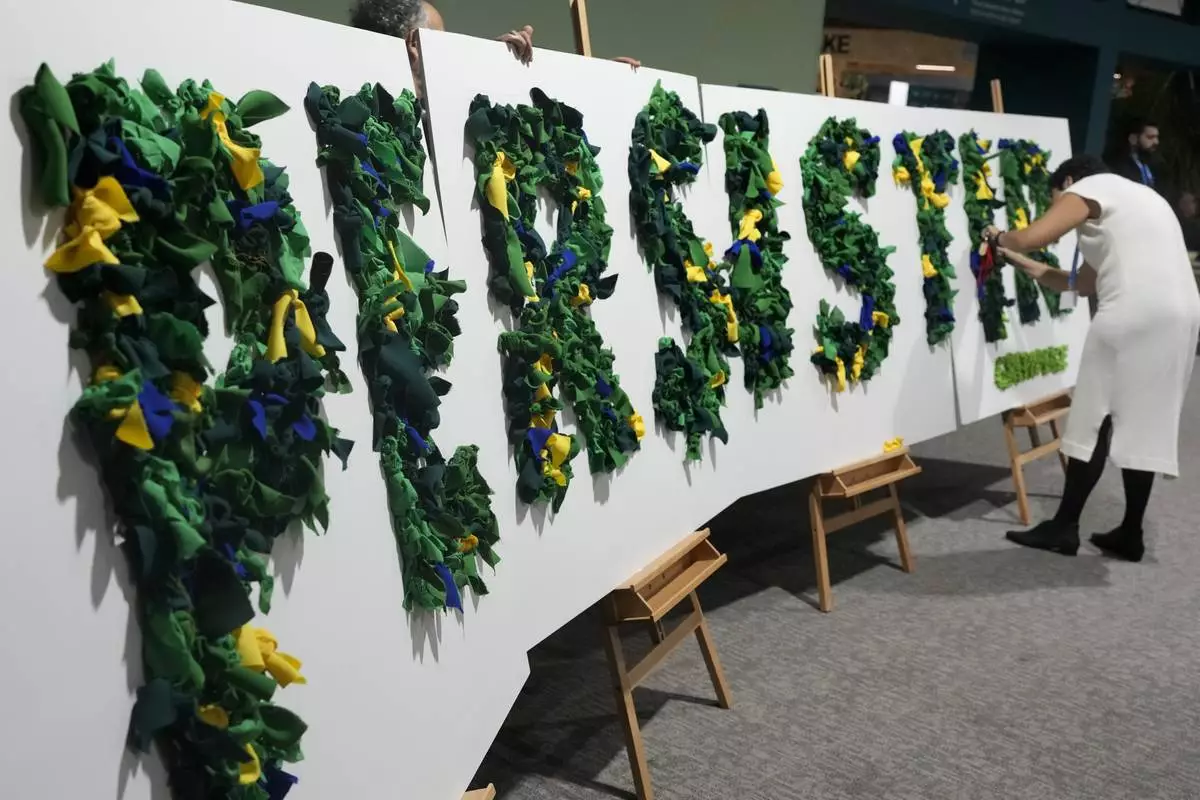
An activist works on a display that reads in Portuguese persistir, that translates to persist, during the COP29 U.N. Climate SuRafiq Maqbool Nov. 22, 2024, in Baku, Azerbaijan. (AP Photo/Rafiq Maqbool)
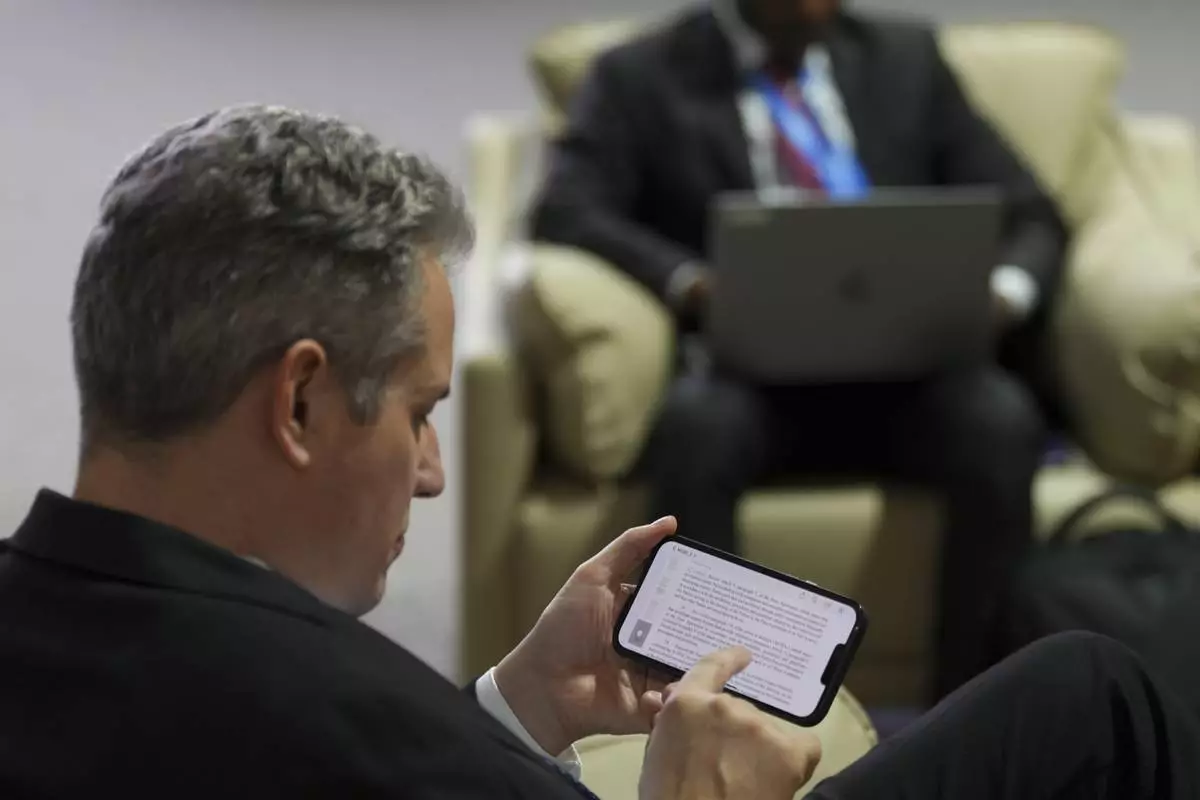
A person reads a draft of a proposed deal for curbing climate change during the COP29 U.N. Climate Summit, Friday, Nov. 22, 2024, in Baku, Azerbaijan. (AP Photo/Peter Dejong)
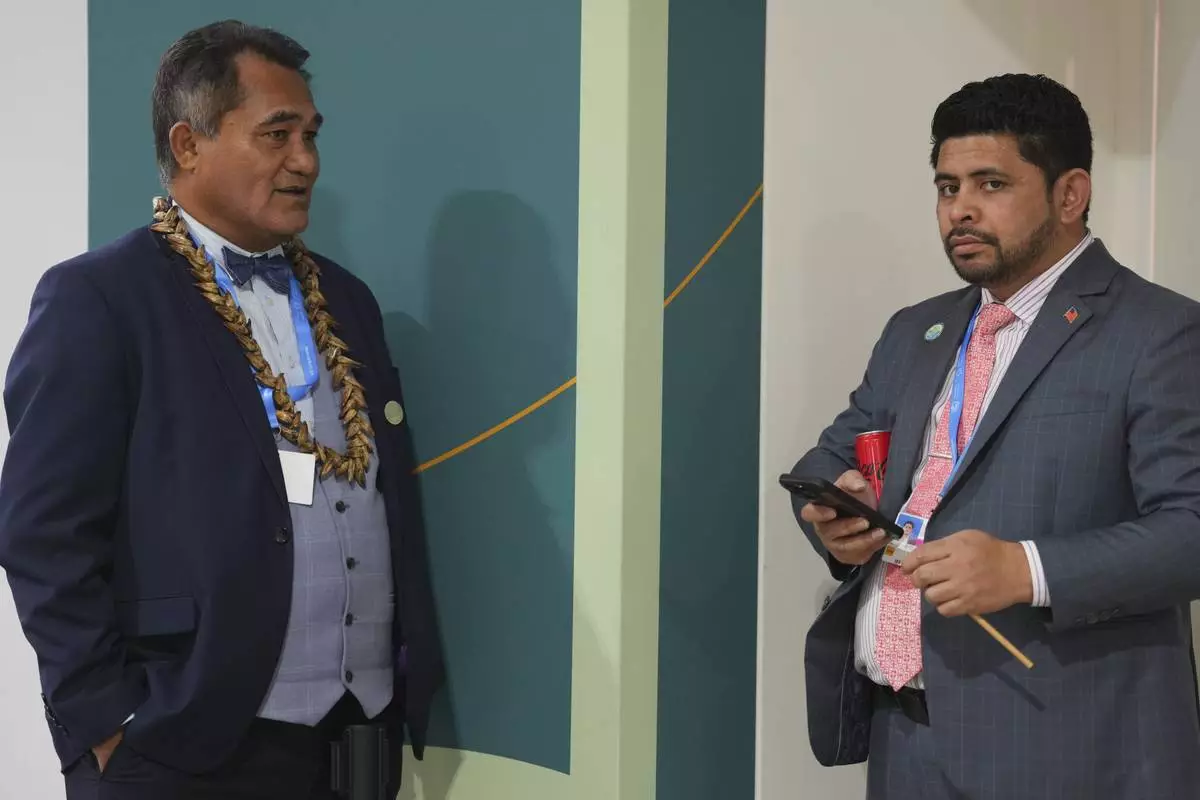
Toeolesulusulu Cedric Schuster, Samoa environment minister, waits outside a room at the COP29 U.N. Climate Summit, Friday, Nov. 22, 2024, in Baku, Azerbaijan. (AP Photo/Peter Dejong)
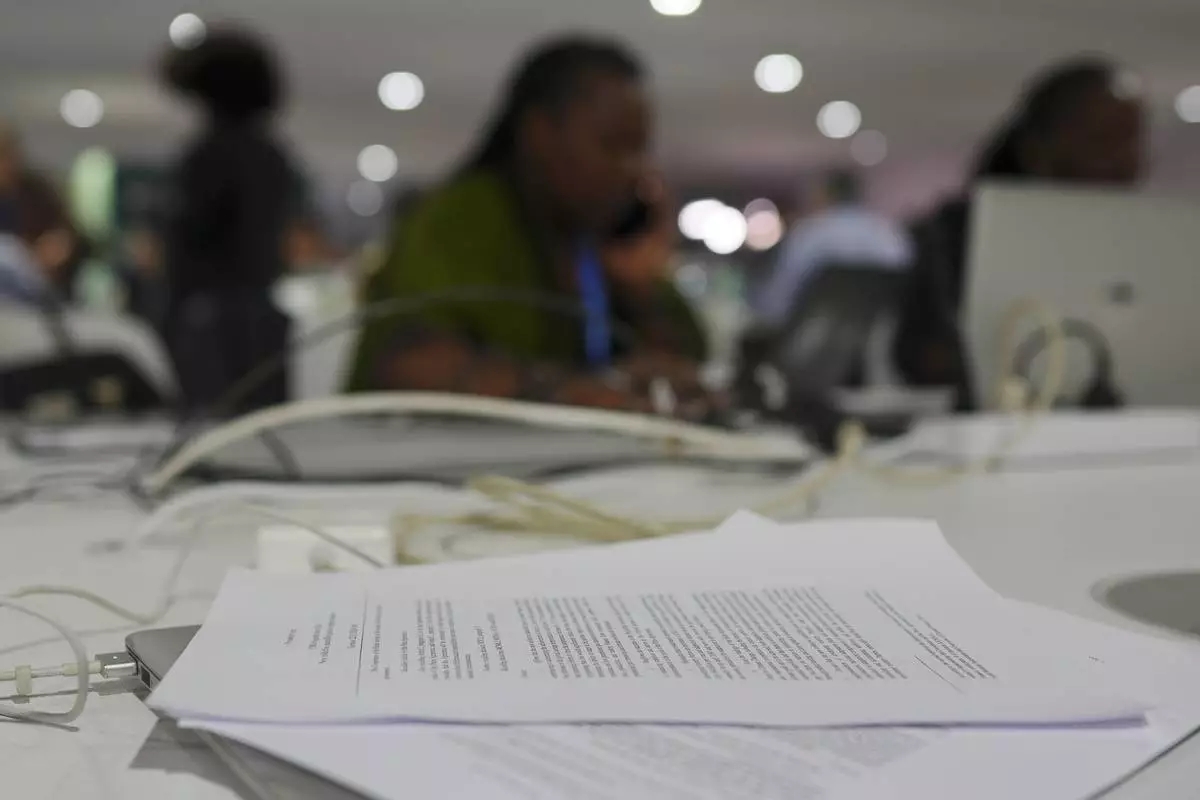
A draft of a proposed deal for curbing climate change sits on a table at the COP29 U.N. Climate Summit, Friday, Nov. 22, 2024, in Baku, Azerbaijan. (AP Photo/Peter Dejong)
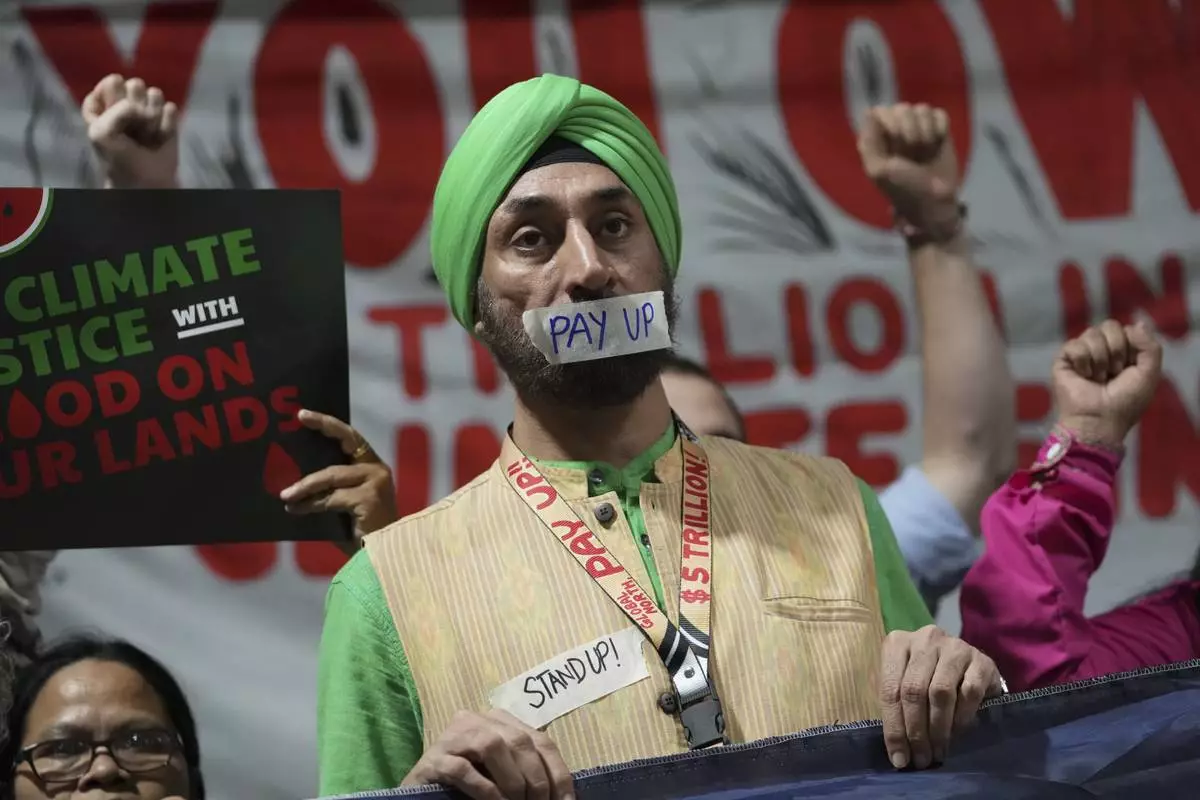
Activists participate in a demonstration for climate finance at the COP29 U.N. Climate Summit, Friday, Nov. 22, 2024, in Baku, Azerbaijan. (AP Photo/Sergei Grits)
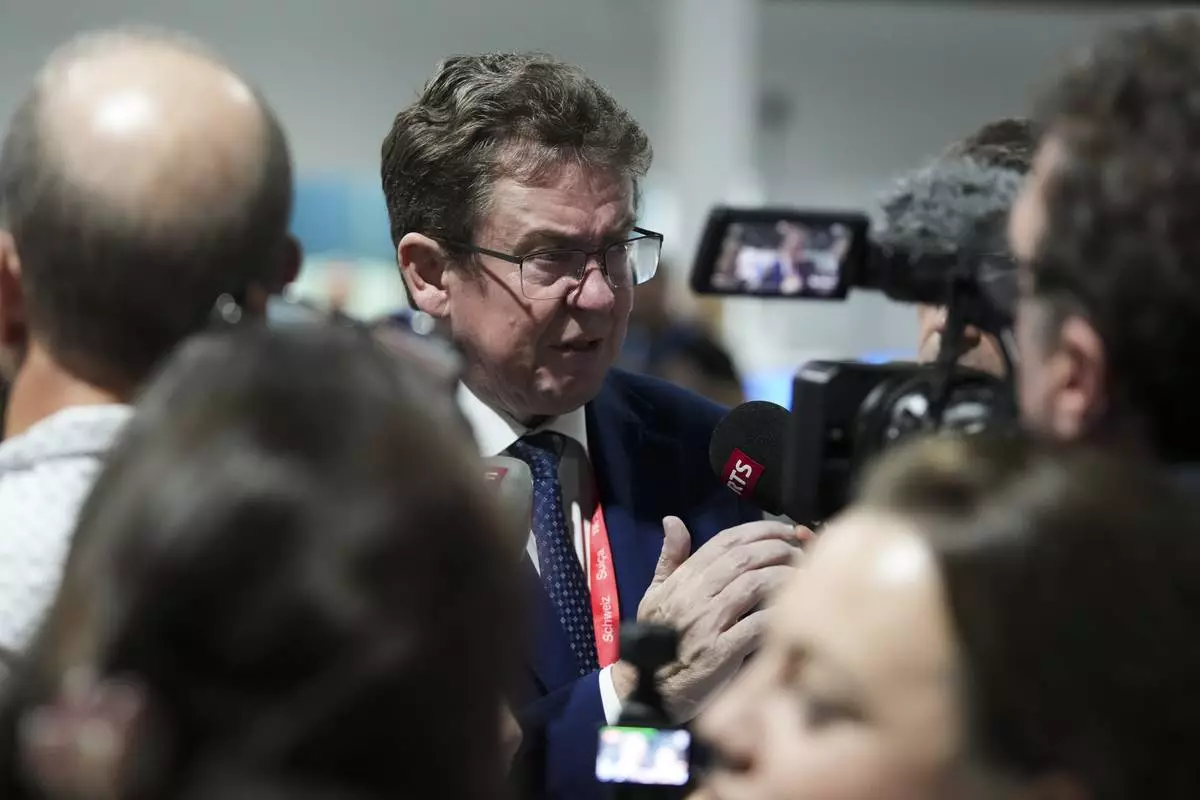
Albert Rosti, of Switzerland, speaks to members of the media at the COP29 U.N. Climate Summit, Friday, Nov. 22, 2024, in Baku, Azerbaijan. (AP Photo/Sergei Grits)
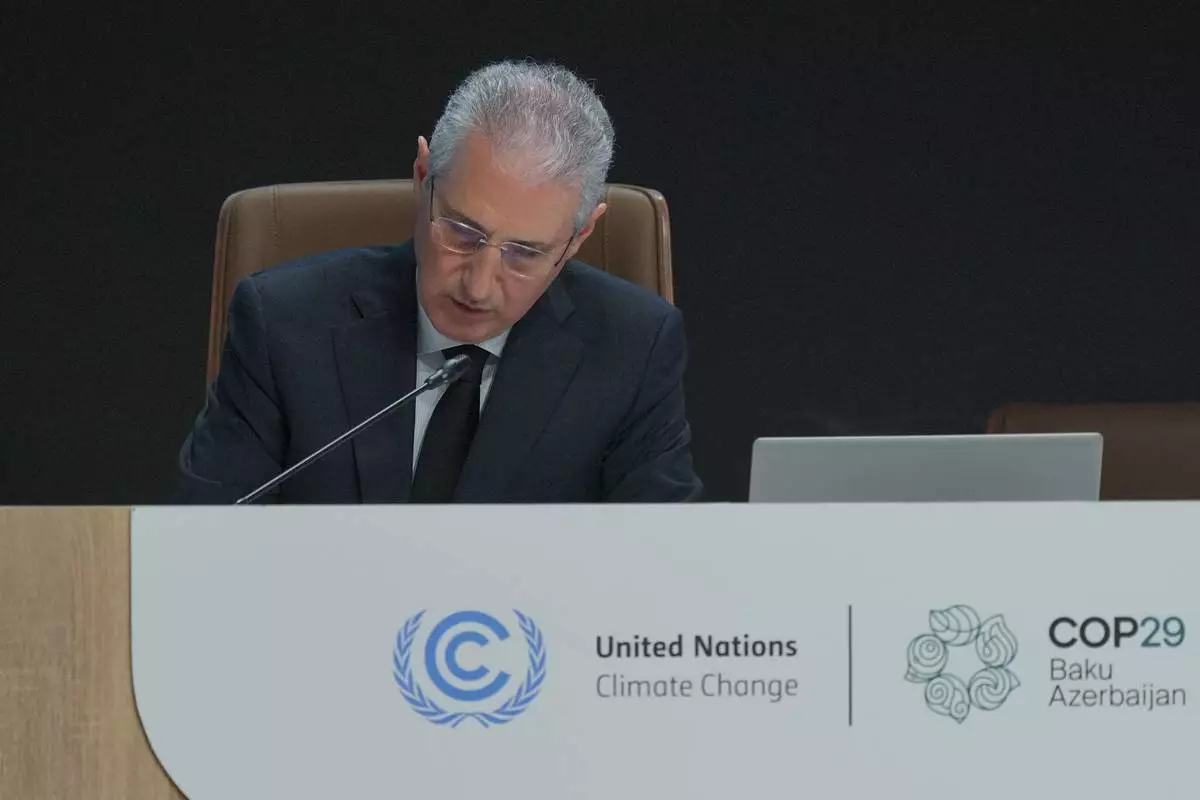
Mukhtar Babayev, COP29 President, rehearses in the plenary at the COP29 U.N. Climate Summit, Friday, Nov. 22, 2024, in Baku, Azerbaijan. (AP Photo/Peter Dejong)
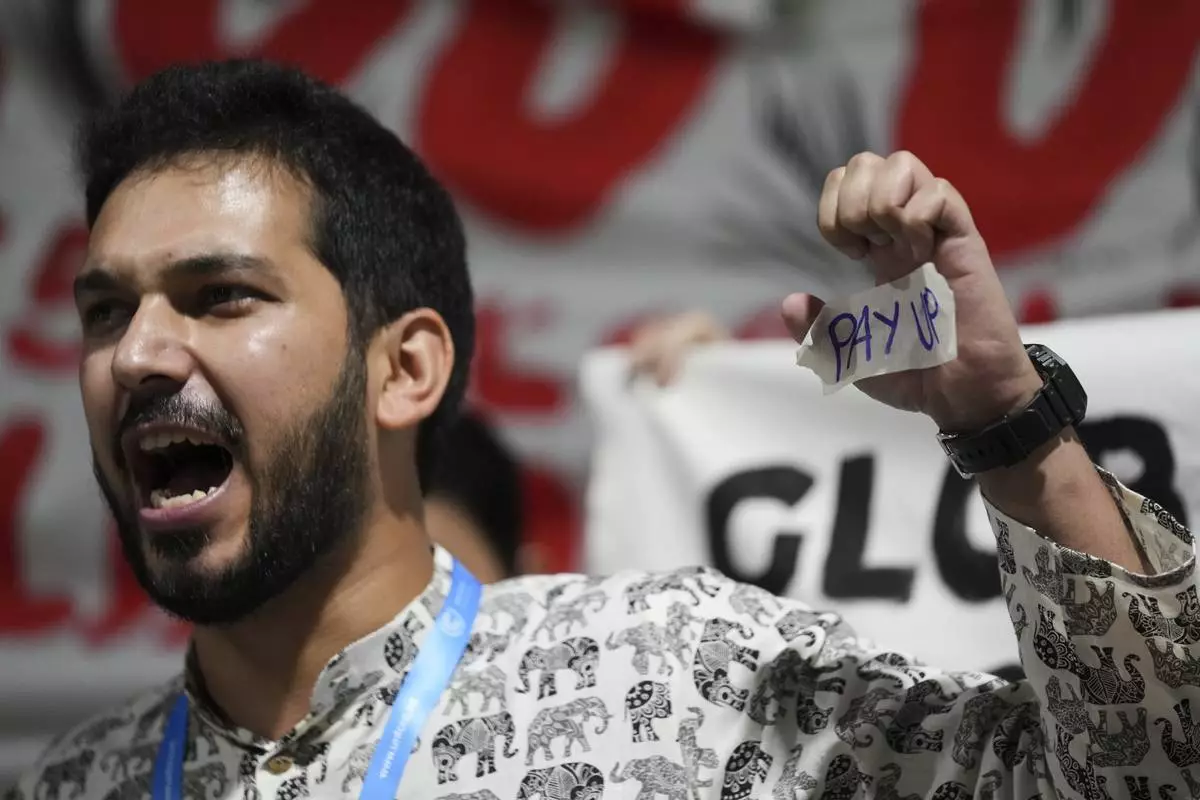
An activist displays "pay up" on his hand during a demonstration for climate finance at the COP29 U.N. Climate Summit, Friday, Nov. 22, 2024, in Baku, Azerbaijan. (AP Photo/Sergei Grits)

Activists dressed as clowns participate in a demonstration for climate finance at the COP29 U.N. Climate Summit, Friday, Nov. 22, 2024, in Baku, Azerbaijan. (AP Photo/Sergei Grits)
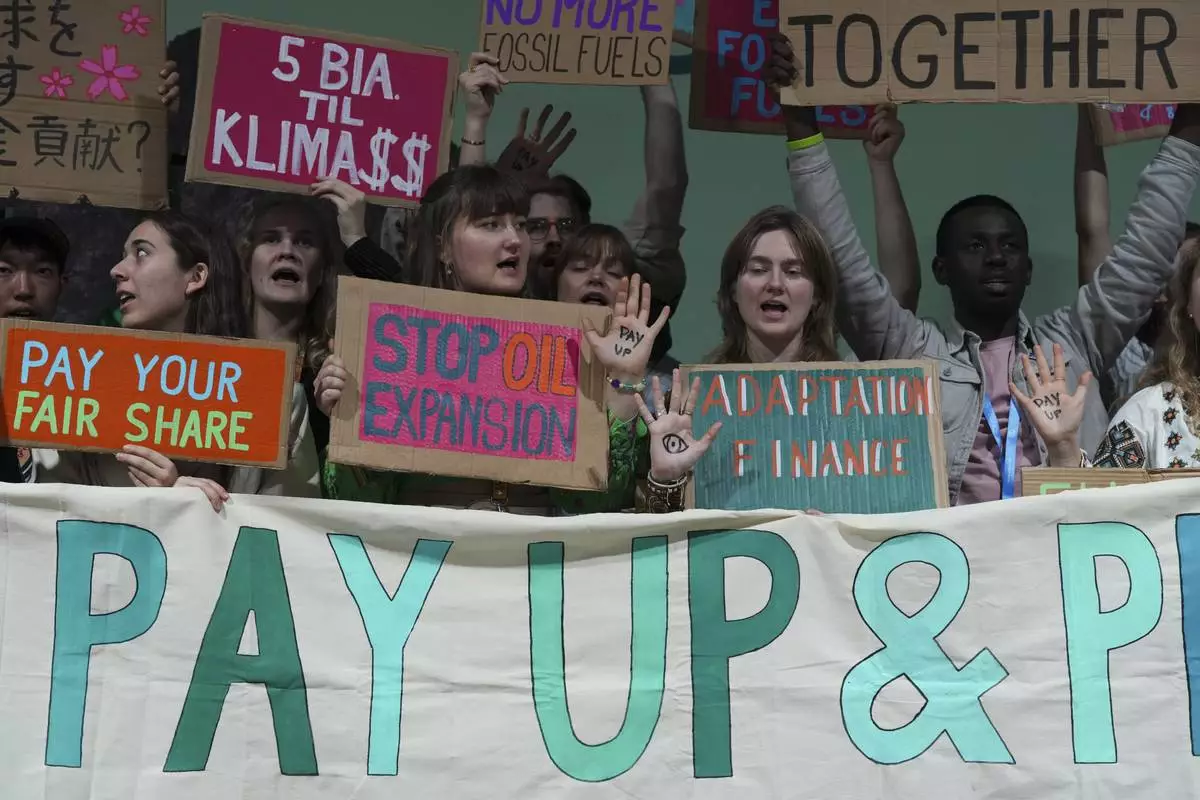
Activists participate in a demonstration for climate finance at the COP29 U.N. Climate Summit, Friday, Nov. 22, 2024, in Baku, Azerbaijan. (AP Photo/Peter Dejong)

Activists participate in a demonstration for climate justice at the COP29 U.N. Climate Summit, Friday, Nov. 22, 2024, in Baku, Azerbaijan. (AP Photo/Peter Dejong)
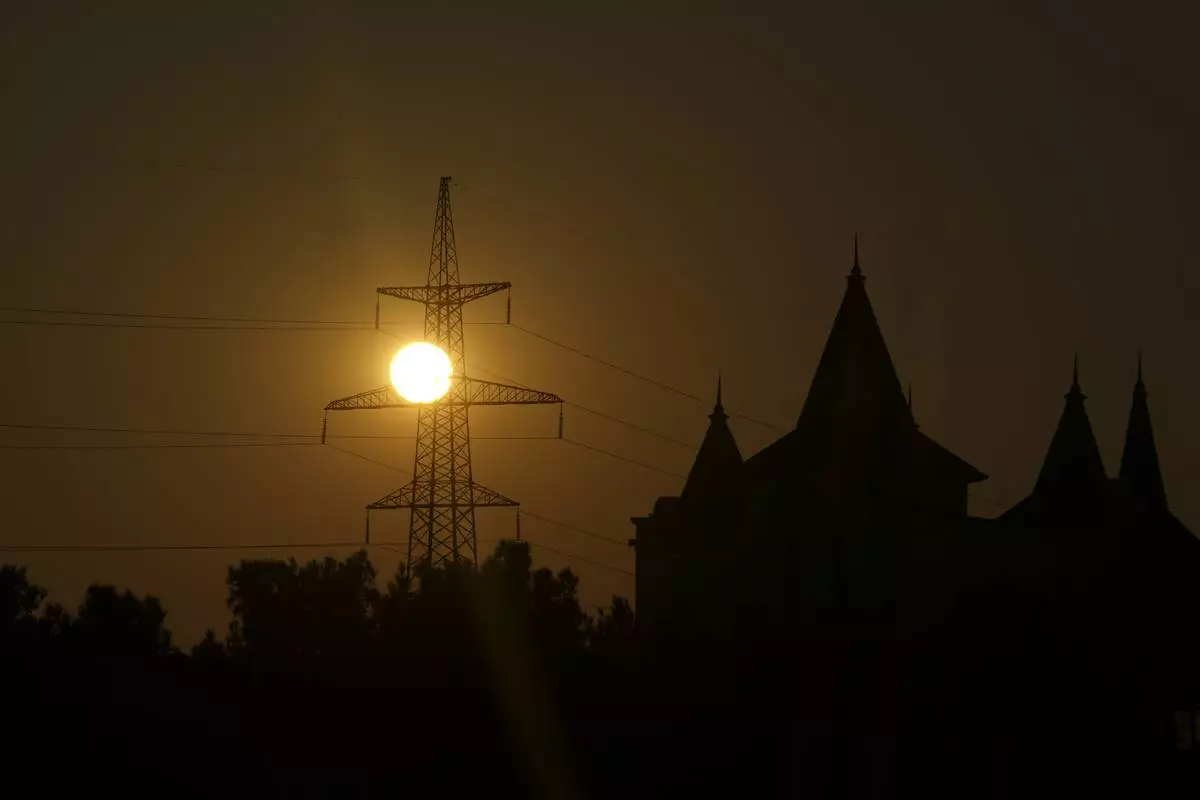
The sun rises visible behind a transmission tower during the COP29 U.N. Climate Summit, Friday, Nov. 22, 2024, in Baku, Azerbaijan. (AP Photo/Peter Dejong)
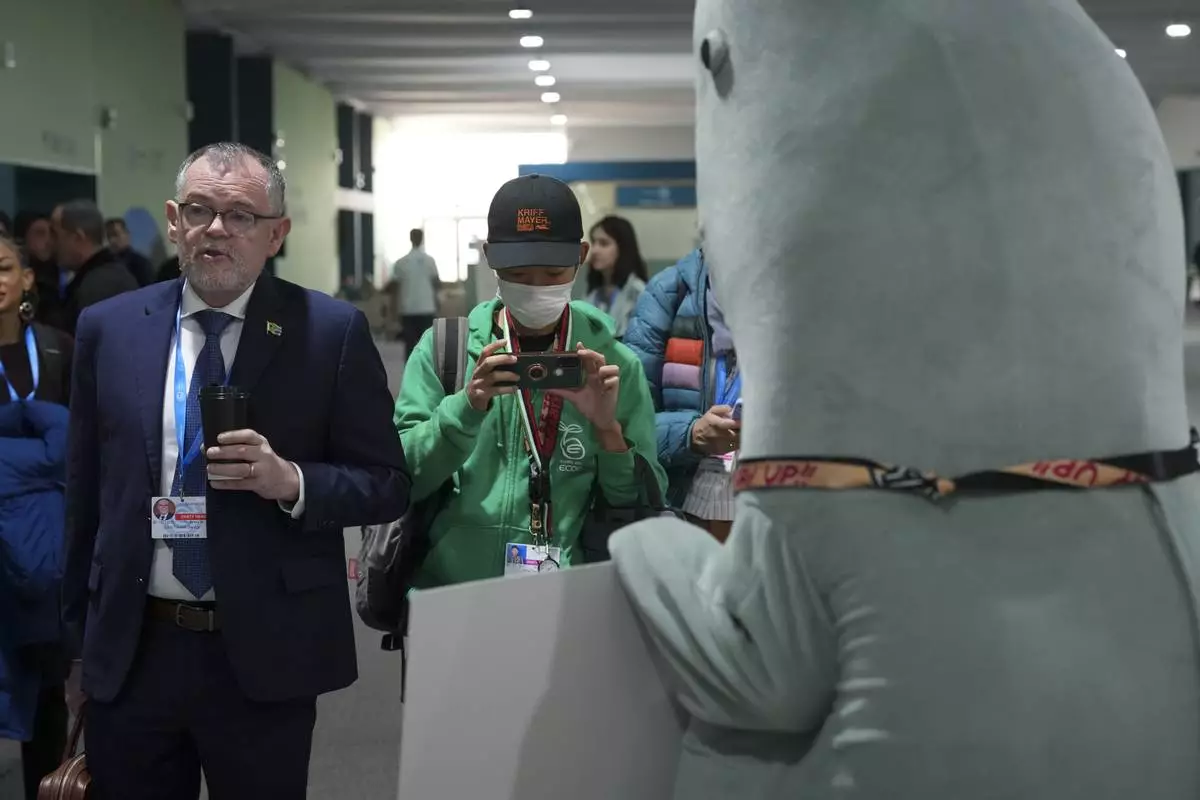
Dion George, South Africa environment minister, left, walks past a person in a dugong costume during the COP29 U.N. Climate Summit, Friday, Nov. 22, 2024, in Baku, Azerbaijan. (AP Photo/Peter Dejong)



